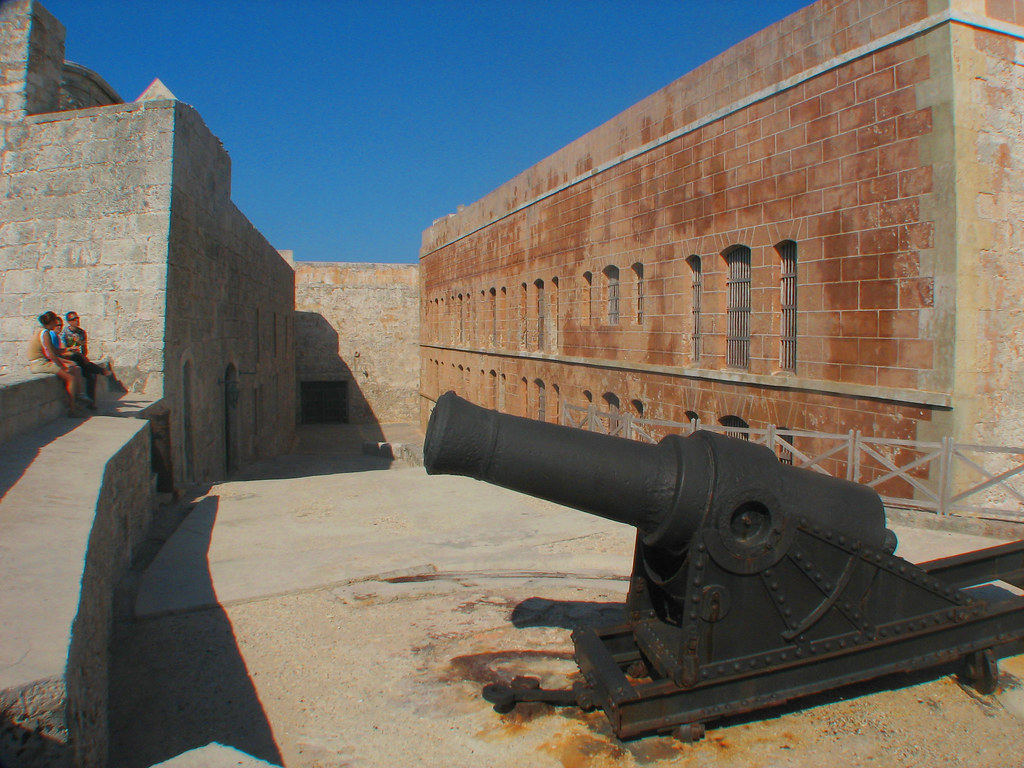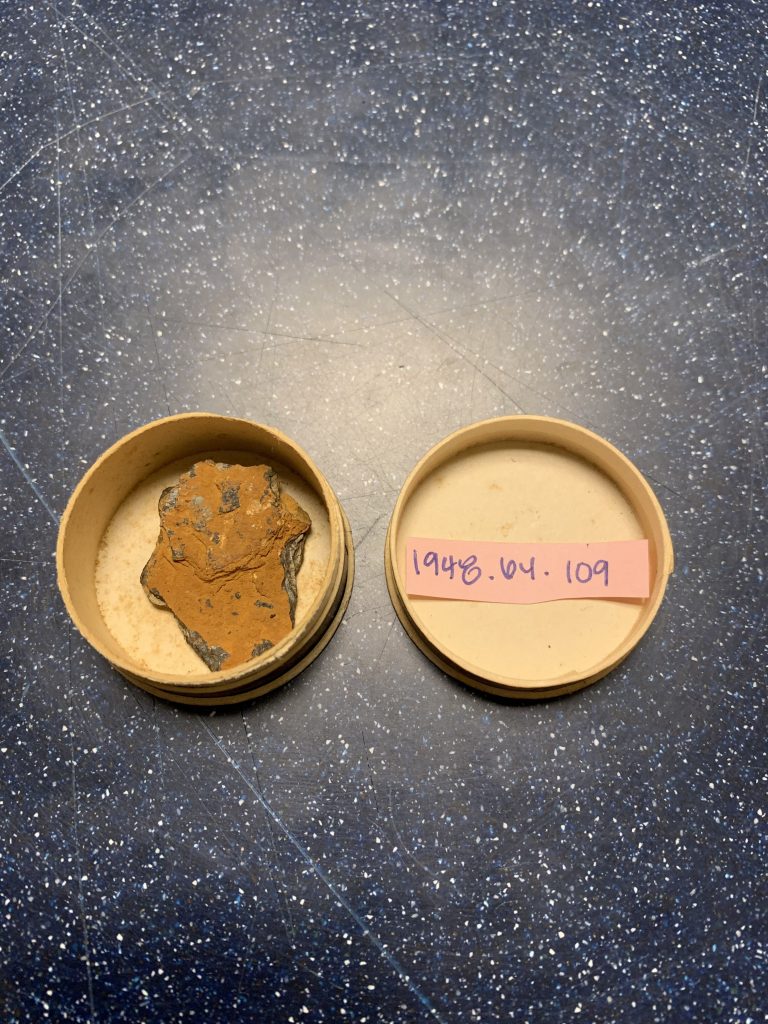- Acquired in Havana, Cuba at Castillo de los Tres Reyes Magos del Morro, 23.1508° N, 82.3562° W
- Acquired in March 1888
- BM# 1948.64.109
General Reeve was what archaeologists now call a chipper—someone who takes small pieces of monuments as they visit them to add to their personal collection. During his travels to Cuba in 1888, Reeve acquired a fragment of iron through this method.

https://search.creativecommons.org/photos/647de3b3-ee5c-4c07-8b04-5d172d4c4511
Architect Juan Battista Antonelli designed Morro Castle, or “Castillo de los Tres Reyes Magos del Morro” and oversaw construction between 1590 and 1630 (El Morro Castle, 2020). Castillo del Morro and San Salvador de La Punta, both designed by Antonelli, were both fortresses used to defend Havana from invaders, notably against the British in the late 18th century during the Anglo-Spanish War (El Cañonazo, 2012).

https://search.creativecommons.org/photos/de5bb34a-aa04-4971-8bbc-fdde093067a9
General Reeve’s orange corroded iron fragment comes from a cannon; he describes his fragment as iron from a disintegrating cannon, meaning this cannon was not in good condition upon acquisition. There are many cannons on display at Castillo del Morro, but perhaps this fragment comes from one of the cannons used to complete an important tradition of the castle and Havana. Every evening at 9pm, a cannon is fired from the fortress. This tradition began in the late 17th century when cannon blasts were fired at 4:30 am and 9:00pm to signify the opening and closing of the gates into Havana. In 1898, the custom changed to firing once at 9:00pm, which still holds to this day and reminisces the closing of the gates of Havana at sunset.

https://search.creativecommons.org/photos/2c8432ed-a9b3-45b0-95f5-5bb0ab67e946
For Further Reading
- Cocroft, Wayne. 2000. Dangerous Energy: The Archaeology of Gunpowder and Military Explosives Manufacture. Swindon: English Heritage.
- “El Cañonazo: Pirates, British and Cannon Blast.” July 2012. LaHabana.com.” LaHabana. La Habana. http://www.lahabana.com/content/el-canonazo-pirates-british-and-cannon-blast/
- “El Morro Castle.” 2020. Castles and other Fortifications in Europe and Beyond. castles.nl. https://www.castles.nl/el-morro-castle
- Fornias, Carlos Venegas, Narciso G. Menocal and Edward Shaw. 1996. “Havana between Two Centuries.” The Journal of Decorative and Propaganda Arts 22: 12-35.
- Niglio, Olimpia. “Geometry and Genius Loci: Battista Antonelli’s Fortifications in Havana.” Nexus Network Journal 16, no. 3 (2014): 723-735.; Pemble, W. W. 1958.
- Sapieha, Nicolas and Francesco Venturi. 1990. Old Havana, Cuba. London: Tauris Parke Books.

